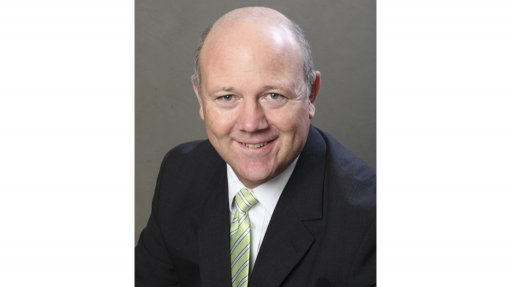
ANDREW LANE There is a big opportunity for public and private sector cooperation on the delivery of infrastructure
The South African coal industry is broadly divided into domestic and export consumption. Export coal is sold primarily to the India and China markets while coal for domestic consumption is mainly sold to State-owned electricity utility Eskom.
The export market currently generates better prices, when compared with coal sold to Eskom, notes multinational professional services network Deloitte Africa Energy Resources and Industrials leader Andrew Lane.
Large coal producers have faced challenges in regard to Eskom’s coal procurement processes, which “have historically been consciously restructured to favour smaller players”, resulting coal supply issues for Eskom and volume and price challenges for larger producers.
Lane explains that being heavily exposed to Eskom also presents a concentration risk. Good relations with Eskom have become an important success factor for the local industry.
In addition, the cost-plus mines linked to Eskom are characterised by several years’ worth of underinvestment. Cost-plus mines refer to Eskom funding the capital cost of facilities in return for guaranteed coal offtake at prescribed qualities.
Lane explains that the South African coal industry also faces logistics challenges, specifically in terms of State-owned logistics utility Transnet’s rail performance.
However, the situation can be improved if there is development of infrastructure.
“There is currently a big opportunity for public and private sector cooperation on the delivery of infrastructure. There needs to be a collaborative effort between Transnet, Eskom and the Industry,” says Lane.
Transnet’s recent call stating that it requires investment into the Durban Port is one area of collaboration. However, there may also be opportunities in the revitalisation of areas such as rail infrastructure.
The coal industry is also impacted on by developments in the transition to a low carbon economy. The transition can potentially determine the lifespan of South African coal mines.
Lane explains that Eskom currently faces the problem of being unable to easily raise funding for new coal projects. Further, South Africa also has to meet its climate obligations against the backdrop of rising unemployment.
Private generation, following the raising of the self-generation threshold to 100 MW, will ease the load of Eskom. However, in some regions, such as the Northern Cape, the grid requires upgrades or additional capacity.
The full impact of decarbonisation on the coal sector depends on how fast the transition is going to happen.
“We also have to be mindful that the move to clean energy will be restricted by supply shortfalls of materials like nickel, cobalt and lithium,” explains Lane.
He comments that South Africa’s developmental agenda will result in the transition going more slowly than other developed countries. However, there is also potential pressure from the international market to move towards decarbonisation. If countries start to penalise exports produced from fossil fuels, South Africa’s exports will become less competitive, he concludes
.